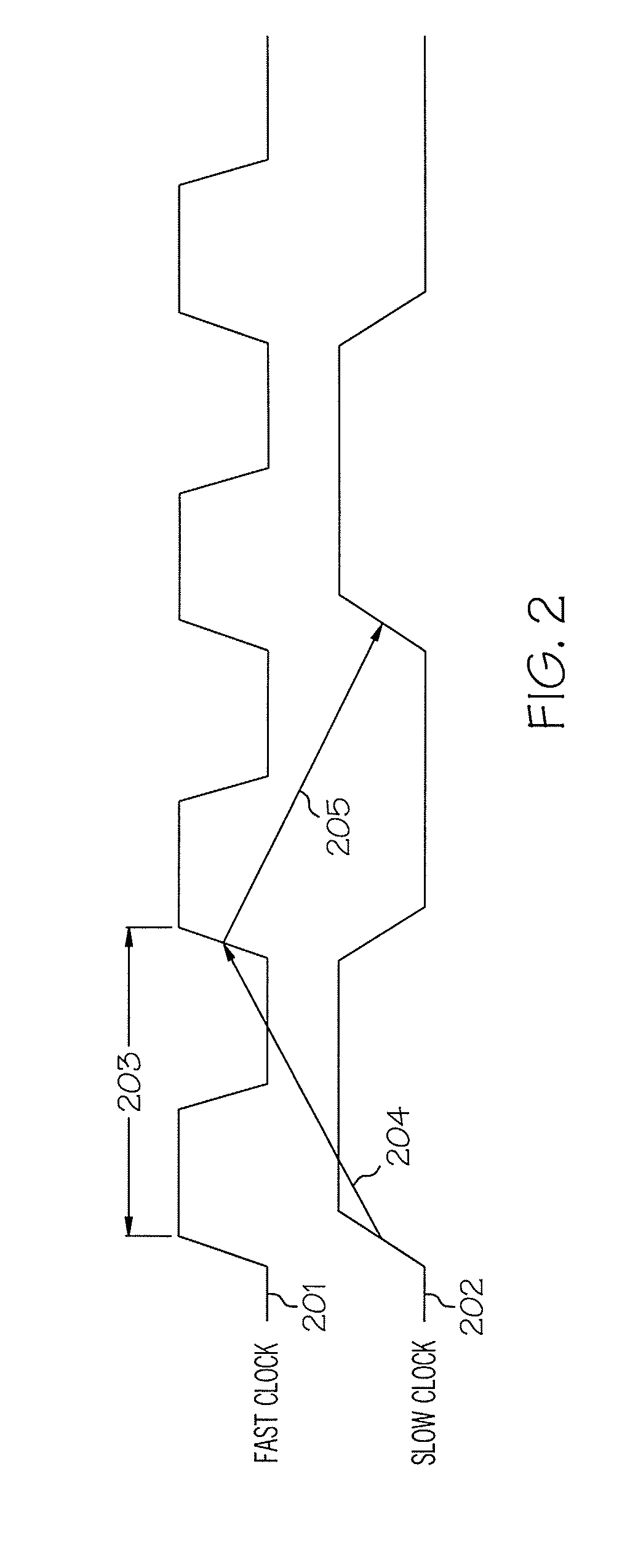Reducing inefficiencies of multi-clock-domain interfaces using a modified latch bank
a latch bank and multi-clock domain technology, applied in the field of electronic data transmission, can solve the problems of significant difficulties in resolving timing violations, embodiments may not contain any logical paths having an n:1 ratio, and embodiments may not contain any logical paths having an n:2 ratio, so as to achieve the effect of reducing space and performance inefficiencies of previous systems and allowing greater flexibility
- Summary
- Abstract
- Description
- Claims
- Application Information
AI Technical Summary
Benefits of technology
Problems solved by technology
Method used
Image
Examples
Embodiment Construction
[0053]The present invention comprises a system and method for transmitting data between clock domains. In one embodiment of the present invention, the latch-and-multiplexer implementation of a cross-domain interface used in previous systems is integrated to save area and power and to improve mixed clock domain performance and efficiency. Further, some embodiments of the present invention allow for greater flexibility in resolving timing criticalities than do previous systems. The embodiments described in detail below contemplate synchronous clock domains. However, the system and method disclosed are applicable to any multi-clock-domain interface.
[0054]When a logical path crosses from one clock domain to another, the designer of a circuit or system takes into account the timing requirements for all valid clock ratios between the relevant clock domains. A domain may be any electronic domain that utilizes a digital clock. For example, in some embodiments, a domain may be a CPU interfac...
PUM
 Login to View More
Login to View More Abstract
Description
Claims
Application Information
 Login to View More
Login to View More - R&D
- Intellectual Property
- Life Sciences
- Materials
- Tech Scout
- Unparalleled Data Quality
- Higher Quality Content
- 60% Fewer Hallucinations
Browse by: Latest US Patents, China's latest patents, Technical Efficacy Thesaurus, Application Domain, Technology Topic, Popular Technical Reports.
© 2025 PatSnap. All rights reserved.Legal|Privacy policy|Modern Slavery Act Transparency Statement|Sitemap|About US| Contact US: help@patsnap.com



